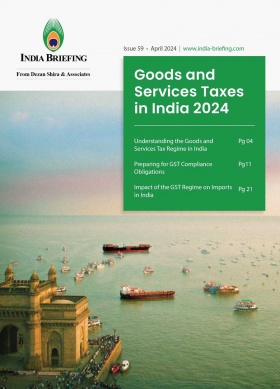India’s Construction Equipment Market to Become World’s 2nd Largest by 2030
India’s construction equipment industry is the third largest in the world, generating a turnover of approximately US$8.5 billion annually. The industry is projected to triple in size by 2030 as it plays a pivotal role in building the country’s infrastructure and contributing to development activities.
India’s construction equipment (CE) industry registered a growth of 26 percent in FY 2022-23, with sales figures crossing 100,000 units, indicating steady recovery during the post-pandemic period.
The country’s economic stability and increased focus on infrastructure activities has accelerated demand for heavy-duty machinery. There are over 50 CE original equipment manufacturers (OEMs) in India, with a cumulative workforce of 5 million people.
Performance of India’s construction equipment industry
During FY 2021-22, the construction equipment industry in India experienced a degrowth of 8 percent due to the global slowdown connected to the COVID-19 pandemic, constraints in the supply chain, and a hike in the value of steel and allied commodities. The number of units sold of CE machinery dropped to 85,385 units in FY ’22 from 92,470 during the previous fiscal.
However, the figures have since rebounded, with the Indian Construction Equipment Manufacturers Association (ICEMA) noting that the total sales figures for FY23 crossed 100,000 CE units, largely driven by demand in the domestic market. For example, there was a surge in requirements of heavy-duty construction equipment from the mining sector due to a 14 percent jump observed in coal production from 782 MT in 2021-22 to 892 MT in 2022-23.
Meanwhile, India’s central and state governments have begun prioritizing infrastructure building as a key development goal, including expanding and modernizing road and highway connectivity and rural-urban development.
ICEMA report highlights
- The sales of earth moving equipment, the largest segment in the construction equipment industry, reached 93,531 units in FY24, marking a 21 percent increase from the 77,164 units sold in FY23. This segment constituted around 70 percent of total CE sales in FY24, with backhoe loaders and crawler excavators experiencing significant growth, contributing to 90 percent of the total earth moving equipment sales.
- Material handling equipment, including pick-and-carry cranes and telehandlers, saw a notable 61 percent increase in sales volume, accounting for 14 percent of total CE sales, compared to 9 percent in FY23. Concrete equipment, comprising concrete mixers, batching plants, concrete pumps, and boom pumps, collectively recorded a 19 percent year-on-year increase in FY24.
- Additionally, road construction equipment, the only segment with negative growth in FY23, rebounded impressively in FY24, selling 6,571 units—a 40 percent rise from the 4,828 units sold in FY23.
India’s top performing industries: ASCON survey report
In 2023, it was reported that the annual budgetary allocation of the Ministry of Road Transport and Highways had increased by more than 940 percent, from about INR 258.72 billion (US$3.109 billion) per year during 2009-14 to about INR 2704.35 billion (US$32.3 billion) during 2023-24.
|
ASCON Industry Survey Report 2023: Production (January to March, y/y 2022-2023)* |
|
|
Excellent |
High |
|
|
Note: Distribution of total sample sectors over different growth ranges based on key parameters.
Domestic demand and product portfolio in India’s CE market
India is heavily dependent on imports to procure precision components, such as hydraulic components, undercarriage, electrical, electronics, and other finished products. According to industry data aggregator Volza, South Korea, China, and Sweden are the main exporters of construction equipment to India.
An ICEMA and Deloitte report, namely, “Innovating Financing Solution,” noted new trends in CE financing that are transforming the way construction equipment products are offered in the market. This includes offering end-to-end solutions, fintech solutions that help automate credit decision making, platform-based aggregator solutions, innovative payment options, and more.
CE market segments
- Earth moving
- Road construction equipment (excavator, backhoe loader, wheeled loader, motor grader, and others)
- Material handling equipment (crane, forklift & telescopic handler, and others),
- Concrete equipment (asphalt finishers, transit mixers, and others), and
- Material processing equipment (crushing equipment)
Recent market trends
- Various companies operating in the Indian market are diversifying their product portfolio to launch electric/hybrid construction equipment products to cater to the growing demand of consumers. For instance, in June 2023, Action Construction Equipment (ACE), a material handling and construction equipment manufacturing company, announced the launch of its first fully electric mobile crane in India at the Bauma Conexpo 2023 Trade Fair in Greater Noida.
- In June 2023, Volvo CE India announced a partnership with Vedanta Iron Ore Karnataka by signing a Memorandum of Understanding (MoU) to deploy sustainable power solutions, such as zero-emission electric off-road machines, at Vedanta IOK’s mines in Chitradurga on a trial basis.
- Further, JCB has been actively engaging in launching various construction electric equipment products in India, such as the electric excavator named JCB 19C-1E.
Vision 2030: ICEMA projections for the construction equipment industry in India
The ICEMA has forecast that India’s construction equipment market will triple from its current size to emerge as the world’s second-largest CE market by 2030. According to the report, one of the factors influencing the overall growth of the business has been the volatility of demand. The report recommends tapping into export opportunities and rising domestic demand to benefit from this momentum.
Building a strong operating ecosystem that can guarantee the CE’s survival and extend beyond OEMs is the other recommendation. In addition, while building a trained labor pool for the CE sector, it is imperative to consider technology developments and modernization.
To ensure the implementation of Vision 2030, the ICEMA has announced the formation of seven panels. These panels have been tasked with consulting with relevant industry stakeholders in the CE industry:
- Brand Building and Communication
- Financial Ecosystem
- Industry Analysis and Insight
- Manufacturing & Supply Chain
- Sustained, Modern, Agile, Resilient and Tech-Enabled (S.M.A.R.T.) Infra
- Strategic Partnership
- Technology and Sustainability
In addition, a ‘Human Capital Task Force’ was constituted in 2022 with the objective of enabling a skilled workforce in the industry.
Outlook
India’s construction equipment industry experienced a boost in sales during FY24, with a 26 percent increase compared to the previous year. As per the data provided by industry body ICEMA, CE sales reached 135,650 units, up from 107,779 units in the previous fiscal year. The surge in sales was attributed to India’s focus on infrastructure development, which stimulated growth across all five major segments of construction equipment, led by earth moving and road construction equipment.
Further, India’s construction equipment market is soon to emerge as the world’s second-largest CE market, which makes it essential to build up a trained labor pool for the CE sector that is familiar with technological developments for CE manufacturing.
(US$1 = INR 83.54)
About Us
India Briefing is one of five regional publications under the Asia Briefing brand. It is supported by Dezan Shira & Associates, a pan-Asia, multi-disciplinary professional services firm that assists foreign investors throughout Asia, including through offices in Delhi, Mumbai, and Bengaluru in India. Readers may write to india@dezshira.com for support on doing business in India. For a complimentary subscription to India Briefing’s content products, please click here.
Dezan Shira & Associates also maintains offices or has alliance partners assisting foreign investors in China, Hong Kong SAR, Dubai (UAE), Indonesia, Singapore, Vietnam, Philippines, Malaysia, Thailand, Bangladesh, Italy, Germany, the United States, and Australia.
- Previous Article India’s Top 5 Investment Destinations in 2024
- Next Article India’s Trade Performance in FY 2023-24 and Strategy to Explore New Export Markets







